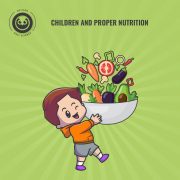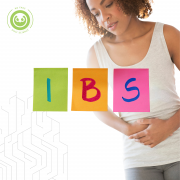CHILDREN AND PROPER NUTRITION
Global data suggests that almost half of the mortality rate under 5 corresponds to malnutrition. So, a healthy nutritious diet is a significant contributor in the growing and developing years of children. India is yet to meet the target for stunting and growth, but
34.7% of children under 5 years of age are still affected, which is higher than the average for the Asia region (21.8%). And this especially corresponds to the children from poor economic backgrounds. Although there is a declining trend in the malnutrition status among children in India, the socio-economic background still remains a key risk factor. The risk of malnutrition was significantly higher among
children living in joint families, children whose mother’s education was less than or equal to sixth standard and those with working mothers.
On the other hand, since most of the nutritional assessments focus on malnutrition only; the risk of overnutrition has also increased among growing children which should also be given attention as it can lead to spurting of many metabolic disorders later during adulthood.
Hence, a healthy nutritious diet is a significant contributor in the growing and developing years of children as it will help set the stage for them towards building a healthy eating practice for the rest of their lives.
HOW TO CHOOSE THE RIGHT FOODS?
Childhood is the most important stage for growth and development of their brain and immune system. So, getting the right amount of energy, proteins, vitamins and minerals is very critical. Apart from this, focusing on hygiene practices while preparing the meals
is also important to reduce the risk of gastrointestinal infections. A simple and proper meal plate designed with all nutrients will enable achieving optimal growth and development.
- Include energy providing foods – It includes carbs and fats. So, give them energy rich foods like whole grains, nuts and vegetable oils, fruits like bananas, apples and starchy vegetables like carrot, sweet potatoes.
- Body building foods-Protein: It helps with growth, development and repair along with building antibodies. Add a good amount of eggs, meat, fish and dairy products.
- Protective foods – Make the meal plate colourful with different varieties of vegetables and fruits. It will help the body to function properly and boost the immune system.
- Calcium and Vitamin D are very crucial for growing children for development of bone mass. So, the inclusion of dairy products (milk, cheese, yoghurt) and vegetables like spinach, broccoli and celery which are rich in calcium is a must. Children get most of their Vitamin D from sunlight and a small amount from some food items like (fish oils, fatty fish, mushrooms, cheese and egg yolks).
A simple way to ensure that kids get the right amount of nutrients is to choose and offer healthy foods for them to eat. It’s also the key to a healthy and balanced plate because each food has a unique combination of nutrient supply—both macronutrients (carbohydrate, protein, and fat) and micronutrients (vitamins and minerals).
STRATEGIES TO IMPROVE THEIR EATING BEHAVIOUR:
In recent days, children are more inclined towards less nutrient dense foods or fast/convenient foods or are malnourished due to their economic background who require fortified high nutrient dense foods to combat their condition. It is our responsibility as an individual/parent and as a nation to guide the children to healthy eating opportunities no matter what their background is, to make them understand what to eat and whether to eat it or not. Setting a proper eating routine will help develop better eating behaviour since childhood and many national programs like Anganwadi feeding or home rations also help towards this. We need to inspire them to have and prefer healthy foods which are prepared at home because children generally observe what we eat and offer to them which will only set their food choices for future.
Tips to set healthy eating behaviour from home
- Make the meal plates colourful and interesting. Pack their lunch boxes mindfully and add small notes on their food choices.
- Try to have a bowl full of fresh fruit within easy view and reach on the kitchen table or bench. You can offer fruit as a snack or if your child is still hungry after meals.
- Avoid digital distractions
- Involve your children in cooking. If your child has helped to make the meal, they’re more likely to eat it.
- Read books with healthy food content for your child – for example, books with pictures of fruits and vegetables. Get your child to point out different types, colours, shapes and so on which will help them to relate during meal time and create curiosity to try them.









